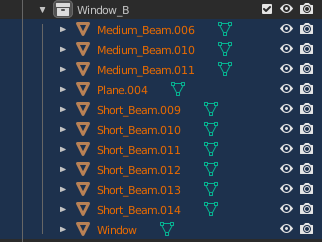Hi everyone,
Why this medieval house can be used as a game asset ready ?
I was working on the following parts of my medieval house, until I’m wondering if this modular house is REALLY game asset ready. Grant seams to present his course like this (and it’s totally acceptable). But in the case, we need to build an entire world, I’m still increasingly dubitative with the process of building these modular assets.
We did a lot without thinking about interpenetrated meshes. Then, all modular parts aren’t composed as a one single objects. (Like, one wall = BeamA_Object + BeamB_Object + Plane + …). There are also a bunch of climping effects and interpenetrations when we’re building the roof part, for instance.


During my studies (excluded GameDev.tev courses), all my professors teach me to delete faces from an object, those are overlapping with a face from another objects, and invisible for the player, to weld also parts from an object with the same material, to create a cut through an object if there is a separation (like for a bottle, it’s cap will be cut in another object from the body part).
I understand this is not a highpoly model. So it’s maybe enough lighter to be increment like this in a game. Grant would certainly teach some basics for blenders beginners to create modular assets.
But in the case we have to build a gigantic environment, considered we need to build high detailed models and place it many times in our scene, I think this tecnic will be not really optimised for type of things.
